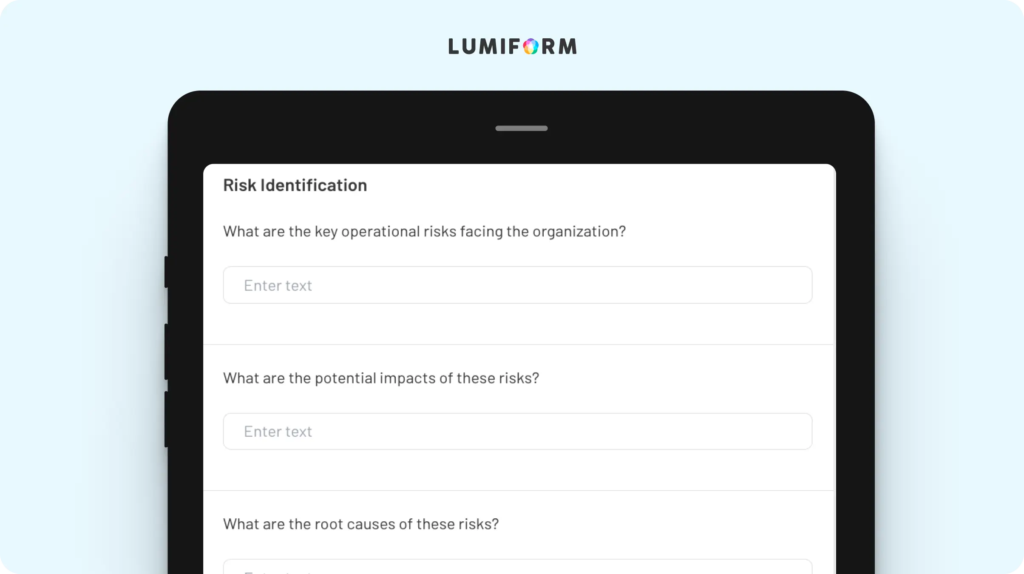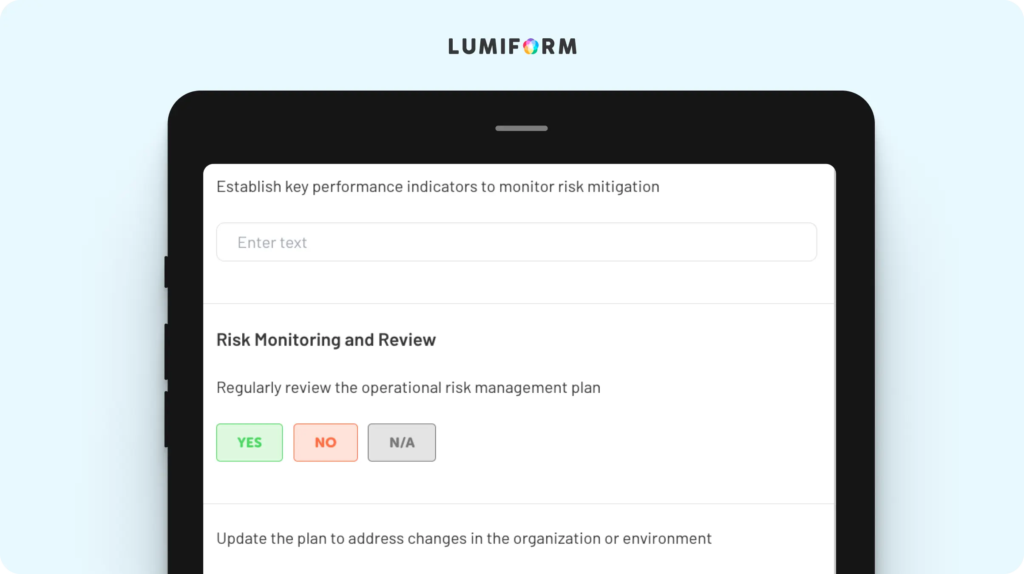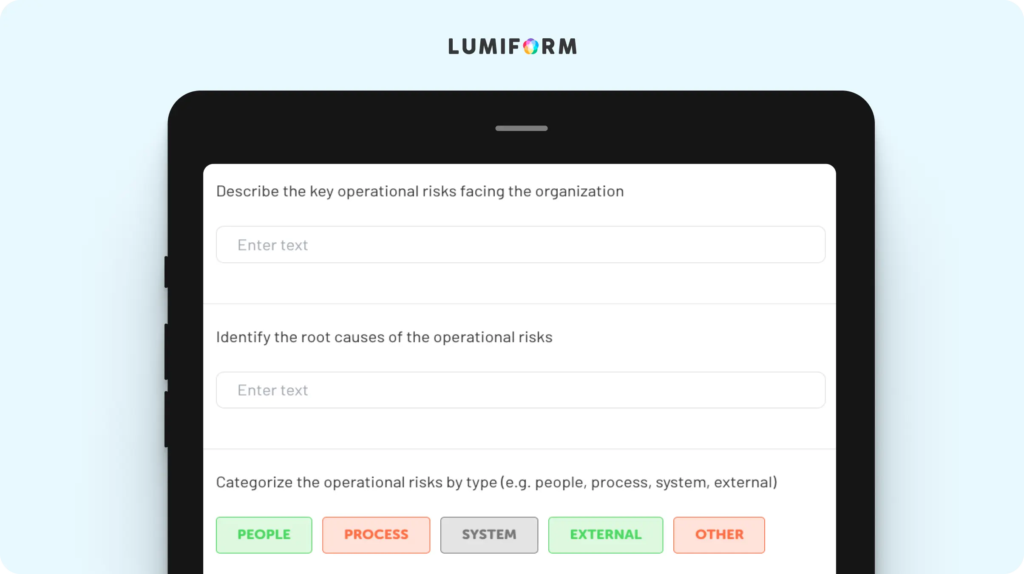Unplanned downtime or safety incidents often trace back to one thing: unmanaged operational risks. These issues don’t just cause delays—they can impact your bottom line, damage reputation, and put your team at risk. An operational risk management template helps you avoid this, guiding you through evaluating and controlling risks across your processes.
The templates below make it easier to stay compliant, assign accountability, and maintain a clear record of actions taken. When risk assessments are standardized, you’re able to respond faster and strengthen operational reliability.
Essential operational risk management templates
Each template supports thorough documentation and organized reporting:
Operational risk management template
This operational risk management template gives you a structured way to record and assess risks that can disrupt your daily operations—from equipment failures to supply chain delays. It makes risk documentation consistent across departments, so nothing gets overlooked. You can rate risks based on likelihood and impact, outline controls, and define how often each risk should be reviewed. Customize the template by adjusting the risk scoring scale or adding industry-specific risk types that match your environment.Operational risk management plan template
Identify, evaluate, and monitor potential risks within your daily operations using this template. Whether you’re managing a production line, coordinating logistics, or running safety checks, the template gives you a clear format for documenting risks, rating their severity, and assigning follow-up actions. It streamlines your analysis and helps you prioritize what needs attention. You can easily tailor the template to suit your workflow by adding categories based on your industry or modifying the scoring criteria.Operational risk management reporting template
With this reporting template, you can capture and analyze day-to-day risks that could impact performance. It guides you through identifying specific risks, outlining their root causes, and categorizing them by source—whether it’s people, systems, processes, or external events. You’ll be able to document overall risk exposure, and define clear mitigation actions and timelines. The template is fully editable, so you can tailor it to your industry or internal workflows.
How to create an operational risk management template in Lumiform
In Lumiform, you can build an operational risk management template that’s both easy to use and detailed enough to support serious decision-making. With the AI form builder, you can speed up this first step and personalize your form. Consider adding in multiple input types—like checkboxes, text fields for detailed descriptions, or photo uploads to document hazards visually.
Once your template is ready, you can deploy it instantly via the mobile app, so teams can complete assessments directly on-site—no paper, no delays. Make it easy for frontline staff by keeping questions clear, focused, and grouped by workflow stage.
If risks are identified, team members can flag issues and assign tasks, helping you respond faster and keep accountability clear. Afterward, use data analysis and report exports to spot recurring patterns and make smarter decisions going forward.
By designing your template with both accuracy and usability in mind, you’re building a system that helps your team act on risks before they escalate.



